Flowering Crabapple
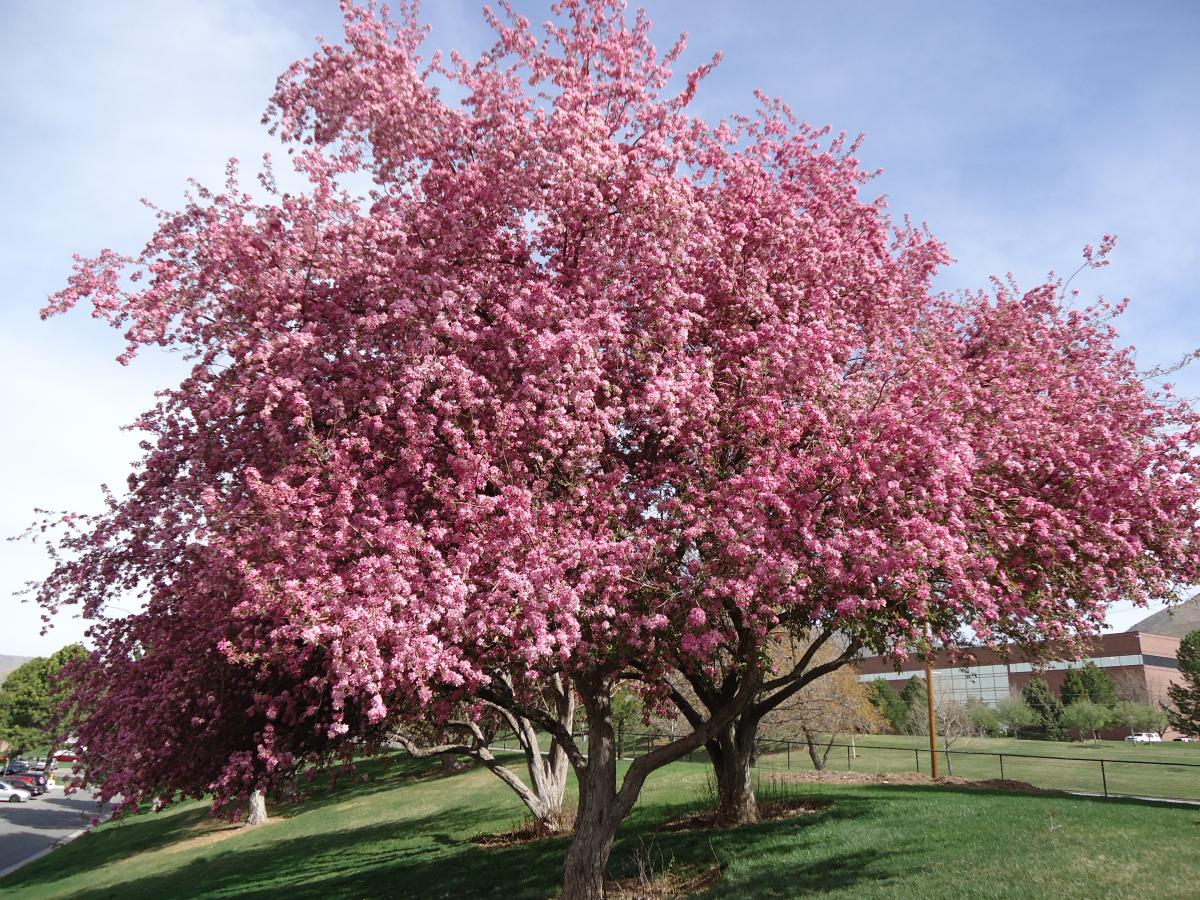


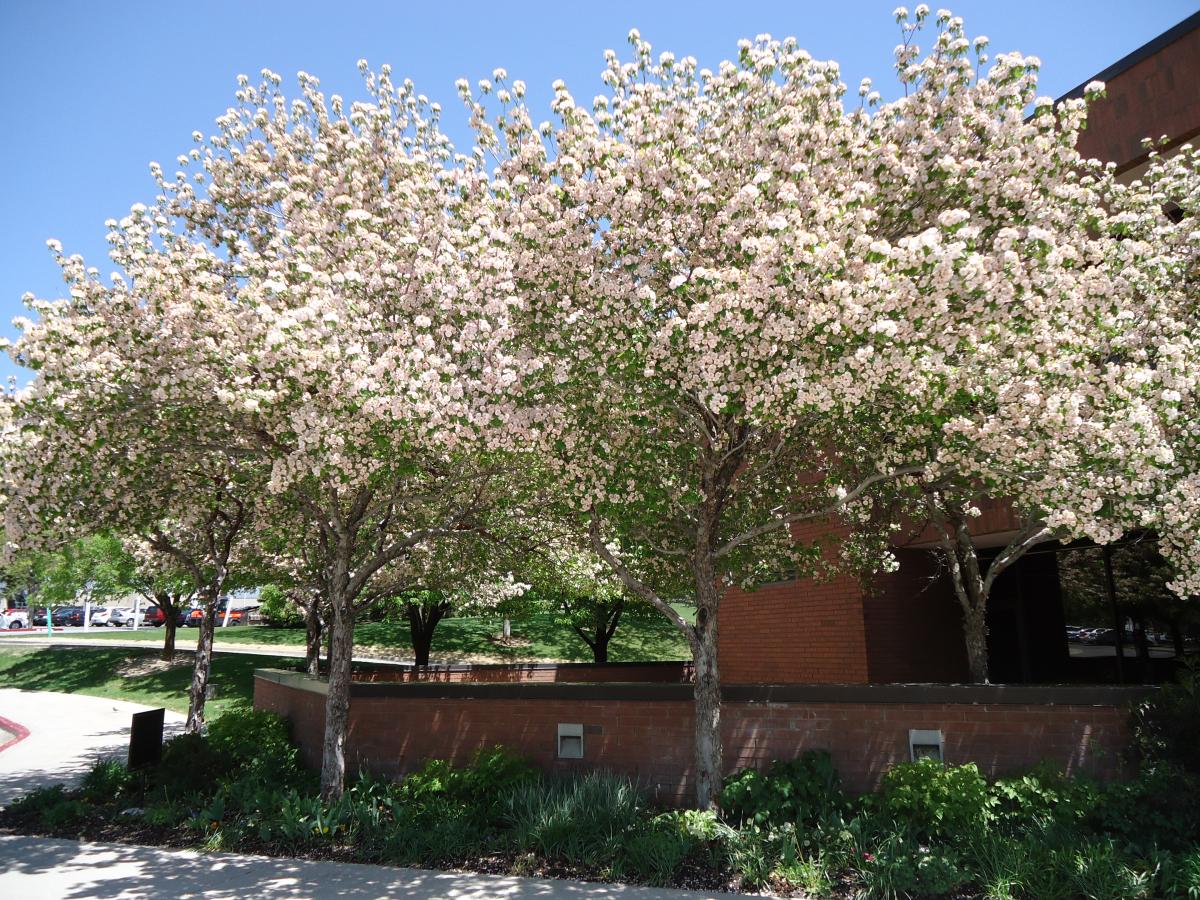
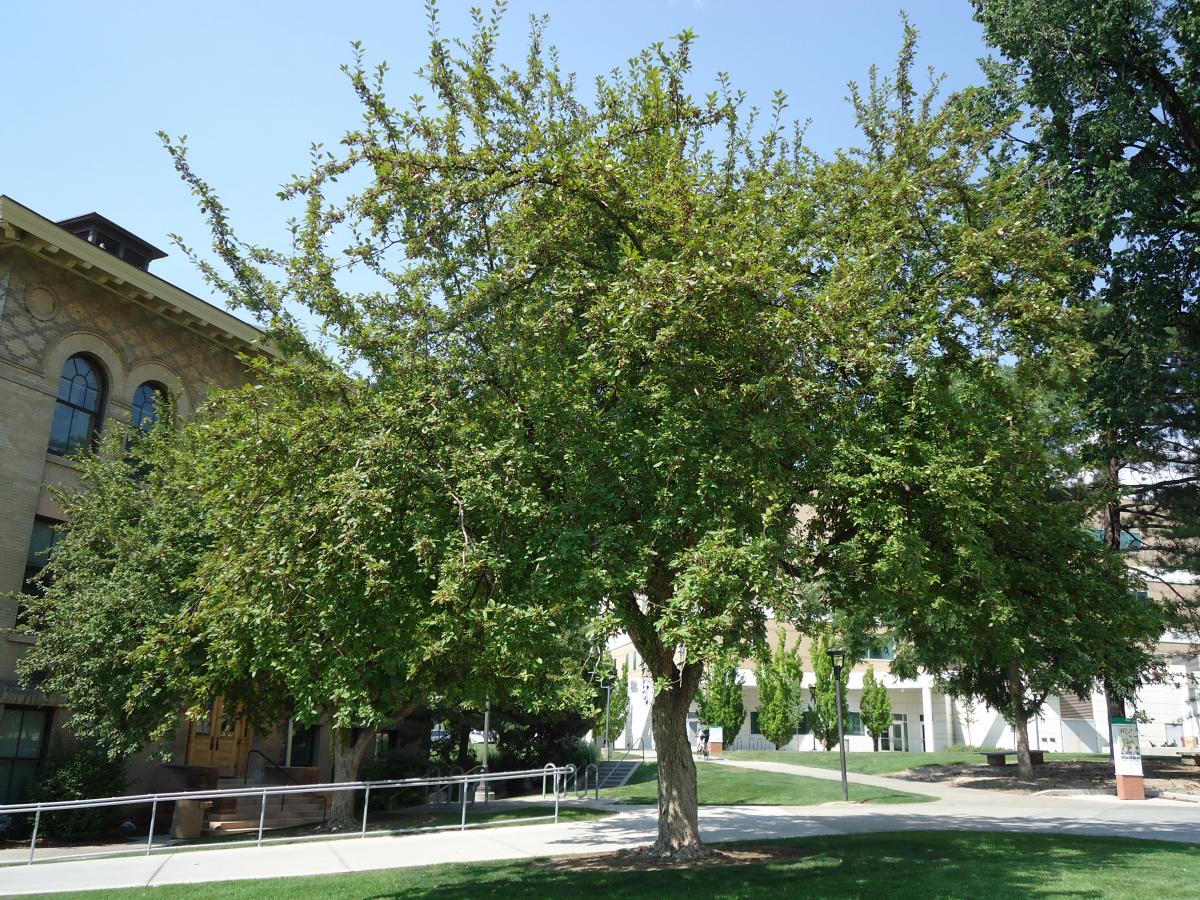


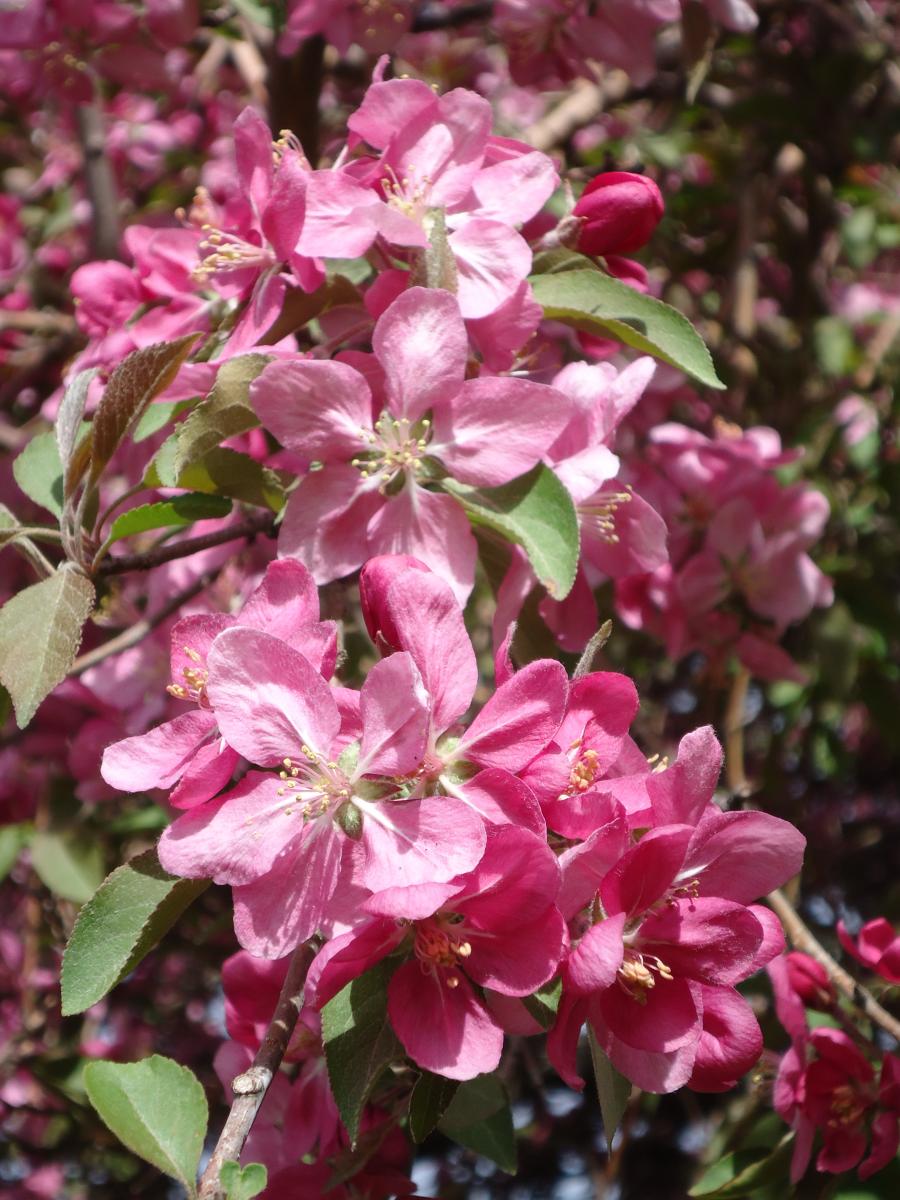

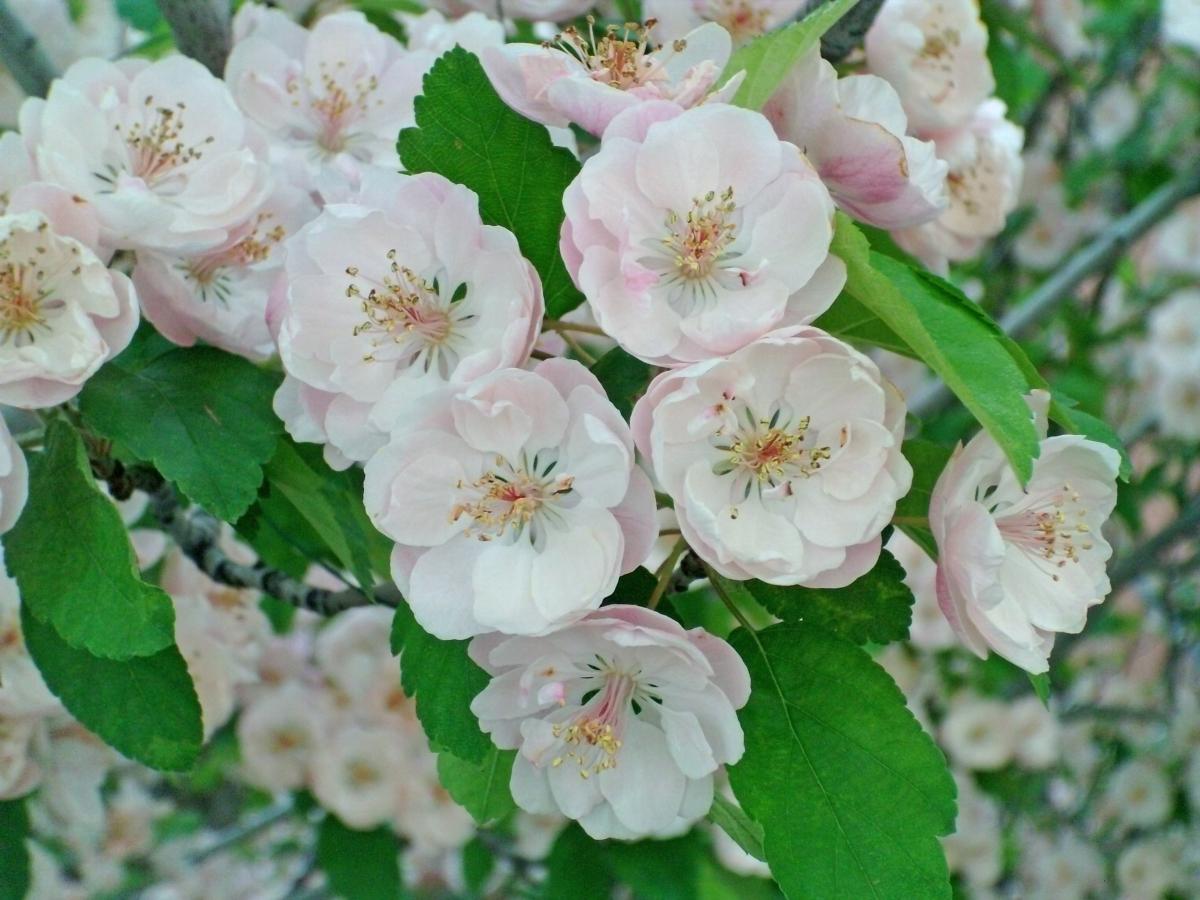


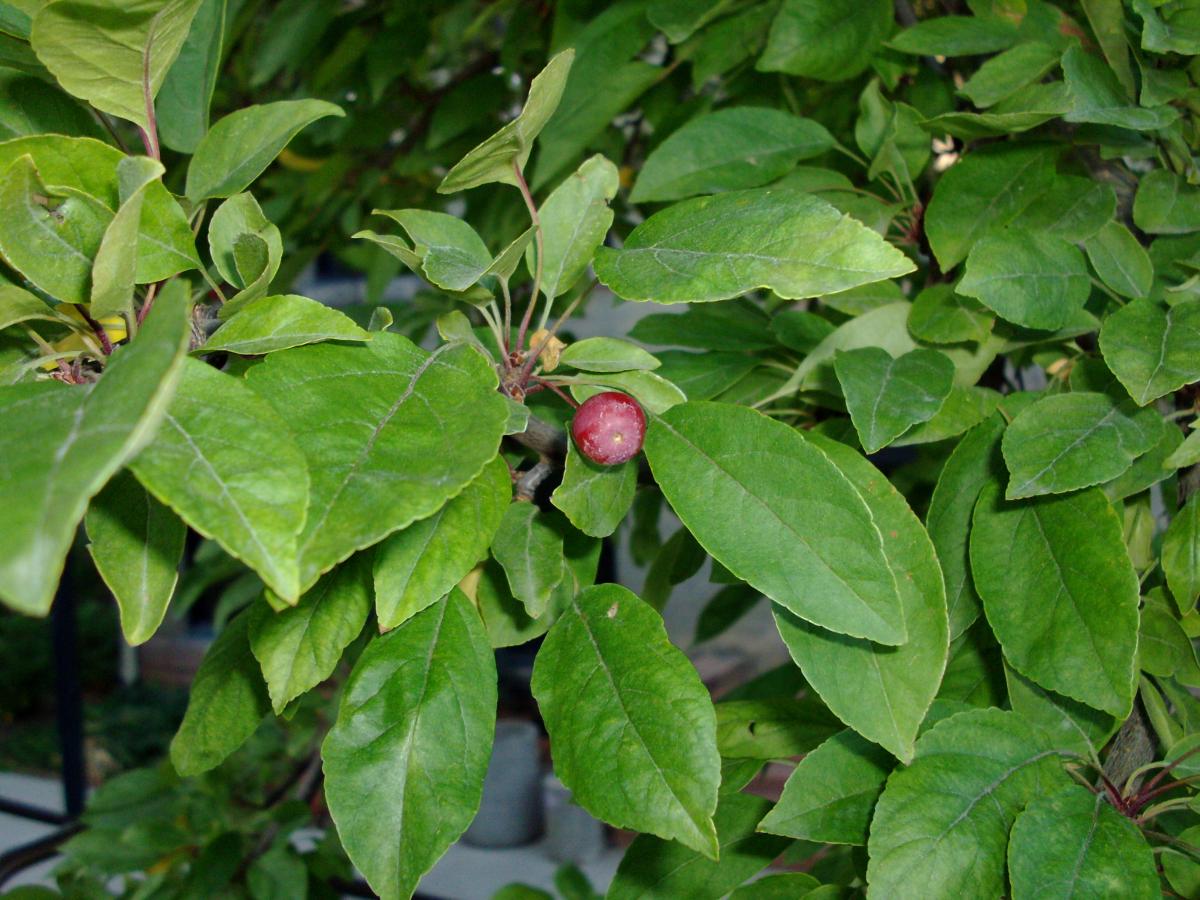
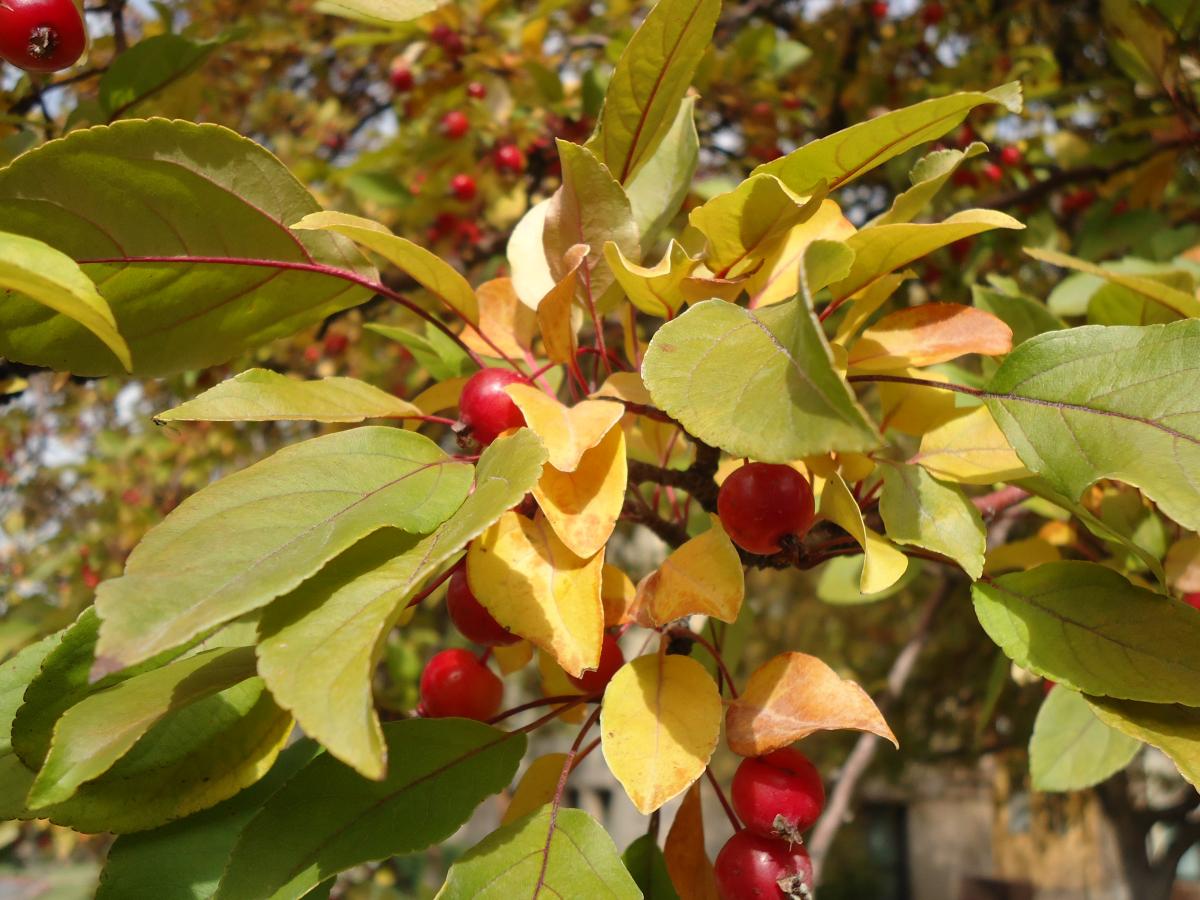
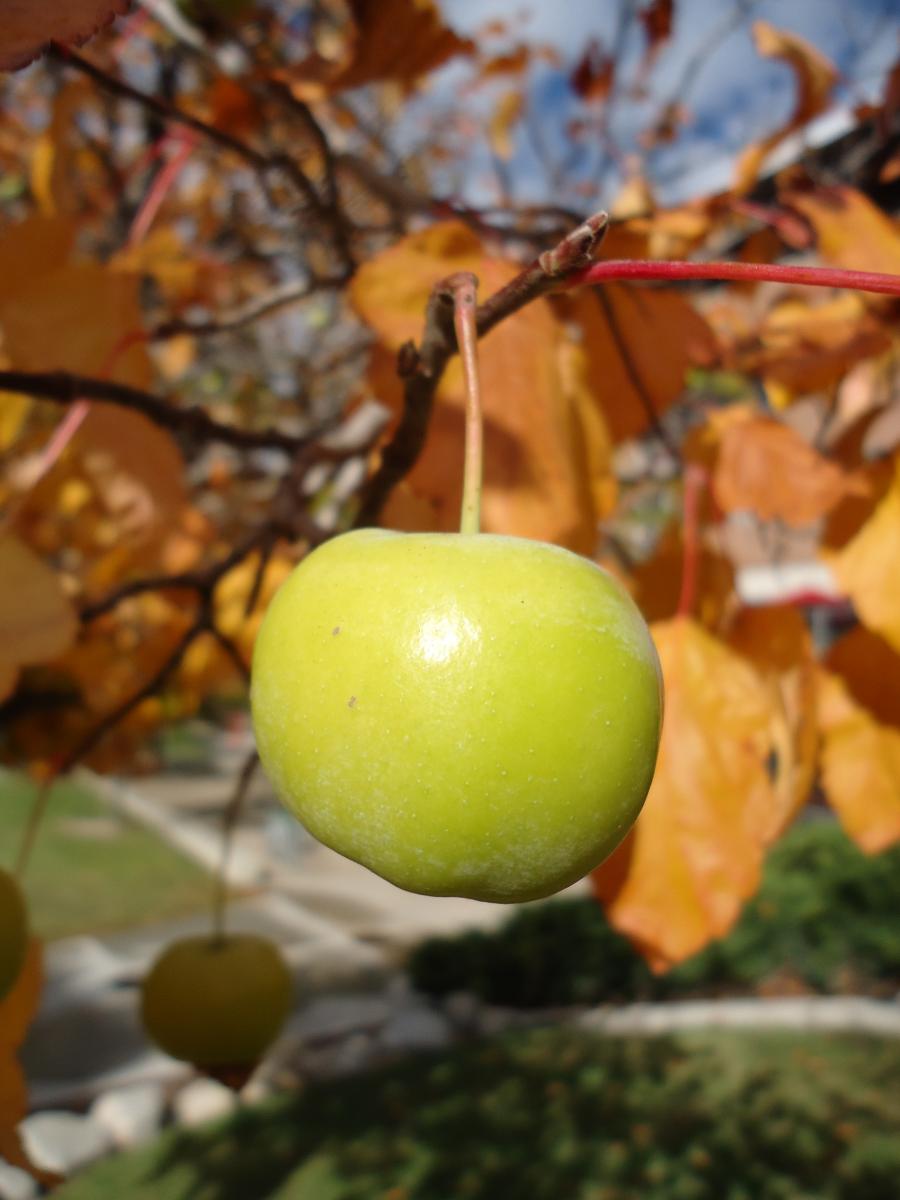
Malus species
Leaves: Deciduous. Wide variety exists among crabapples in leaf size and shape. Leaves are usually 1 to 3 inches long, oval shaped with a pointed tip. Color varies from green to purple-red depending upon the variety.
Bark/Twigs: Gray-brown bark color. Scaly and peeling on older trunks.
Flowers/Fruit: Very showy flowers. White, pink, or dark rose flower colors. Single flower with 5 petals grows in clusters. Some varieties have double flowers with extra petals. Produces ¼ to 2 inch fruit that varies in color from yellow green to red and orange. Some varieties do not fruit.
Mature size and shape: Variable sizes. Small to medium. 15 to 25 feet high. Usually rounded crown.
General information/special features: Plant in full sun. Well-drained soil.
Landscape use and maintenance: Good specimen tree or planted in groups. Can be planted near power lines, but check the mature height on the variety planted. Average growing rate. Average maintenance. Prune before early June. Most crabapples initiate flower buds for the next year in mid-June to early July. Pruning to remove sucker growth may be done at any time. A spray can be applied in the spring to prevent the fruit from forming, but it decreases bloom time.
USDA Hardiness Zone: 3 to 8
Family/Origin: Rosaceae – Rose. Crabapples are a confusing group of trees from a horticultural or botanical standpoint. They consist of several species and hundreds of cultivars from all over the world.
Campus Use: Extremely common. Different varieties can be found on the west side of the Park Building (Bld 1) and by the southwest stairs of the Union Building (Bld 53).
